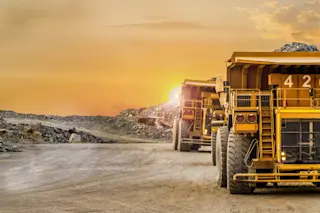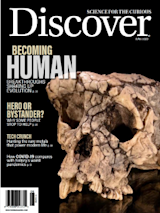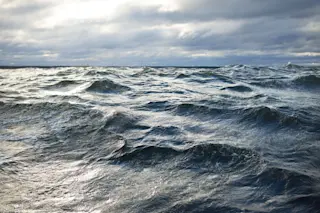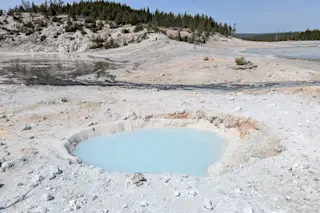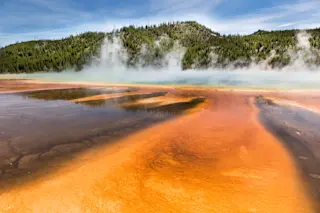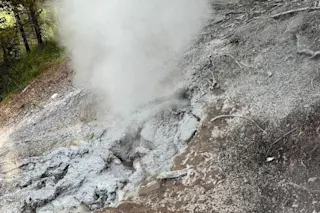Make no mistake: We are running out of elements. As humans have filled in all the corners of the periodic table, each element has resulted in technological innovation.
Europium and indium are crucial for televisions and touch screens. Rhenium is necessary in fighter jet engines. And to avoid some of the effects of climate change, we need lithium and cobalt for electric vehicle batteries, tellurium for solar panels and dysprosium for wind turbines.
Yet we cannot make these elements — they formed, along with Earth, billions of years ago. To replenish our dwindling stores and keep up with a growing, modernizing world, we must mine for more.
Prospectors are widening their search as they seek fresh sources of raw materials that won’t disrupt populated areas — no one wants a mine in their backyard. They’re looking for natural ores in places once considered too remote to mine, before the materials’ demand justified the costs and arduous journeys: the Arctic, the deep sea and even the asteroids nearest Earth.
But after a century of heavy industrial activity, we also have a wealth of human waste products full of reclaimable elements: wastewater, discarded consumer electronics and even pollution in the atmosphere. Technologies that scientists are developing to clean up these wastes can literally turn trash into treasure. “If you’re going to remove it, why not recover it?” says William Tarpeh, a chemical engineer at Stanford University.
Raw Materials
The Arctic
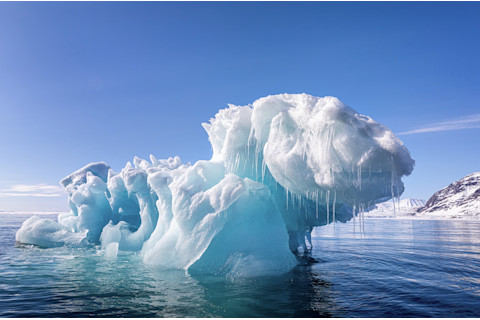
As warmer land and water temperatures melt glaciers and sea ice around the globe, permafrost also has started thawing. The changes to permafrost destabilize existing buildings and any future construction in the Arctic. The lack of ice roads on frozen rivers and lakes limits travel across the Arctic, including in areas that would be potential mining sites. (Credit: Jane Rix/Shutterstock)
Jane Rix/Shutterstock
The Great White North is already a familiar location for mining. The industry has been an economic mainstay of Arctic countries for centuries. Finland’s Ojamo iron mine began production in 1530, while Sweden’s Falun Mine operated as far back as the Viking era. And still today, mines scattered throughout Russia’s tundra supply some 40 percent of the world’s palladium, essential for catalytic converters and fuel cells. But the Arctic’s extreme temperatures and unforgiving landscape have precluded vast swaths from exploitation.
That may soon change. “The exploration up in the North is not finished,” says Janice Zinck, the director of green mining innovation with the federal agency Natural Resources Canada. “We’re really just scratching the surface in terms of what’s out there.”
Renewed interest in the Arctic has been driven by a shift in demand. Base metals like iron and copper, used in bulk for infrastructure, aren’t the top priority today. Now, the push is on for more so-called technology metals, such as the rare earth elements dysprosium and terbium, which strengthen magnets and give screens color.
Arctic nations joined forces from 2012 to 2016 on the Circum-Arctic Mineral Resource Project to compile data on the region’s riches. They identified several major deposits, including one of the world’s largest sites of rare earth elements at Kvanefjeld in Greenland. And as the Arctic Circle warms, more areas like Greenland’s interior and the Arctic Ocean’s seafloor will open up. But the changing climate also increases the challenges, warns Zinck. Thawing permafrost destabilizes existing and future buildings and mining structures, while the melting of valuable ice roads — frozen rivers or paths on frozen lakes — limits travel.
Sustainability will be key for future Arctic mines, says Zinck. Mining companies operating in Norway, for example, have been required since 2010 to restore the area at the end of a mine’s life. “Rebuilding after extraction should be an obligation,” says geologist Morten Smelror, former director of the Geological Survey of Norway.
The Deep Sea
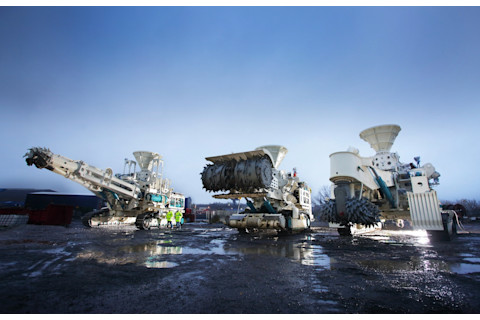
Deep-sea polymetallic nodules (above) often contain nickel, cobalt and copper. Nautilus Minerals intends to use its seafloor production tools (left) to cut, extract and collect material in search of seafloor resources. (Credit: Emma Critchley/Nautilus Minerals)
Emma Critchley/Nautilus Minerals
Jules Verne predicted the existence of valuable seafloor minerals only a few years before their actual discovery. In Twenty Thousand Leagues Under the Sea, Captain Nemo of the submarine Nautilus says, “There exist, at the bottom of the sea, mines of zinc, iron, silver, and gold, the working of which would most certainly be practicable.”
Three years later, in 1873, the real-life English exploration ship HMS Challenger proved Nemo right when it hauled up curious, potato-sized black rocks from the floor of the Pacific: so-called polymetallic nodules rich with manganese, iron, nickel and cobalt, among other metals. Over the next 150 years, scientists found two more types of metal-rich resources beneath the waves: deposits of seafloor massive sulfides, often found at the boundaries of tectonic plates, that have copper, gold and silver; and cobalt crusts, which grow on underwater volcanoes scattered worldwide, including a large population in the Pacific.
With deposits of high-grade metals dwindling, companies have begun making plans to tap these element-rich deposits. As a bonus, seafloor mining faces fewer of the problems associated with terrestrial mining. For one, the seafloor is in nobody’s backyard, so disturbance to communities is minimal. Oceans also cover more than 70 percent of the planet, potentially hiding enough elements to supply all of humanity’s needs for the foreseeable future. And, perhaps most crucially of all, while every nation keeps mineral rights within 200 nautical miles of its coastline, the seafloor’s elements in international waters don’t belong to any one country.
No deep-sea mining operations are running now, but companies and countries are eager to change that. Australian company Nautilus Minerals intends to begin commercial mining of seafloor massive sulfides off the coast of Papua New Guinea once it untangles itself from financial trouble. Diamond Fields Resources is looking to do the same off the coast of Saudi Arabia in the Red Sea. As for international waters, all eyes are on the International Seabed Authority to set global deep-sea mining laws this year, after it finishes assessing the potential environmental impact.
“I’m quite optimistic about that process, slow and bureaucratic as it is,” says biologist Adrian Glover of the Natural History Museum in London, who is involved with the International Seabed Authority’s assessment. “It’s been very successful in an emerging industry and getting people thinking about environmental risks and legal responsibilities, well before the industry starts. And that’s a really positive thing.”
The Asteroids
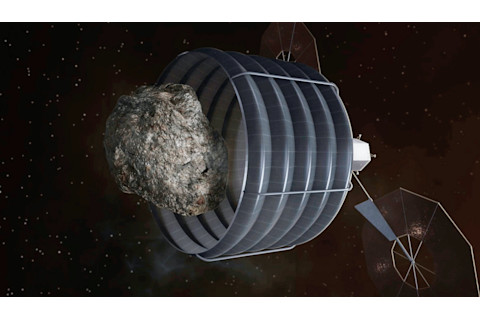
Asteroids may one day be sources for platinum. But first we’d have to capture one robotically, shown in this artist’s rendering from NASA. (Credit: NASA)
NASA
Before NASA’s Apollo missions to the moon, our only firsthand knowledge of space rocks came from the meteorites that had fallen to Earth. Now, not only have we studied moon rocks, but we’ve also collected samples directly from asteroids and comets. And it turns out space is full of useful materials. Of the roughly 20,000 known asteroids closer than Mars, more than 700 are metallic, says Mitch Hunter-Scullion, founder and CEO of Asteroid Mining Corporation in the U.K.
While actually mining asteroids would be, ahem, astronomically expensive, one metal alone could make it worth the trip. “The business case is driven by the price of platinum,” says mechanical engineer Amanda Hughes of the University of Liverpool. In terrestrial mines, ore that contains 5 parts per million of platinum is worth mining. An asteroid about a half-mile wide with at least 10 ppm of platinum could turn a profit, she says. About 50 asteroids fit that description, according to Hunter-Scullion’s estimate. (Some meteorites have been found with over 120 ppm of platinum.)
Hunter-Scullion is building a comprehensive database of other potential resources that might be found in these platinum-rich asteroids, including base metals like iron and nickel, as well as organic carbon and phosphorus, to further boost mining profits. He’s also hoping to find water, which could support humanity’s expansion into space.
Asteroid mining could happen in two ways: by bringing an asteroid to Earth and extracting its minerals here, or — more likely — by crushing the asteroid in space and returning to Earth with the element-rich concentrates. If asteroid mining sounds like science fiction, that’s because it still is. Scientists would need to figure out, for example, how to smash and collect rocks in zero gravity. They are already taking the first steps of this process, looking for platinum-rich asteroids — prospecting from over 100 million miles away.
Reclaimed Materials
Liquid Wastes
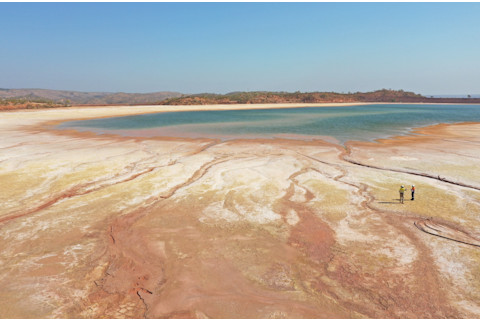
Researchers in Australia are working on using bacteria to mine old tailings storage ponds, such as this one in Queensland, for cobalt. (Credit: Dominic Brown)
Dominic Brown
Toxic algal blooms, acidic streams and metal-tainted soils have one thing in common: These environmental calamities result from wastewater that’s rich in minerals and metals. Wastewater has traditionally occupied the middle ground between carrying too few elements to be exploited as a resource, but too many to be healthy for the environment. That is now changing, thanks to mounting environmental concerns and the soaring costs of materials.
The targeted elements are as diverse as the possible sources. Human and animal sewage is a good source of nitrogen and phosphorus, essential ingredients in making fertilizer for plant growth. Desalination operations — which turn saltwater into safe drinking water — produce concentrated brines full of useful metals that are discarded back into the oceans. And the 14 billion tons of waste tailings — leftover, metal-containing sludge from mines — generated every year contain reclaimable elements, including rare earth metals.
The advantage of prospecting in these wastes is that the elements aren’t trapped inside of rocks. Instead, the challenge is one of careful chemical separation of the wanted from the unwanted at a molecular level. To do this, researchers have designed what are called capture agents, molecules and materials that bind only to the desired substances. Some have engineered bacteria to secrete proteins that bind to specific elements, for example.
This approach of treating wastewater as a resource is already underway around the world. Water treatment plants in North America and Europe have established phosphorus recovery systems to counter harmful algal blooms, with a handful even selling the reclaimed nutrients as fertilizer. In 2018, researchers in Australia developed a material that could extract lithium from desalination brines and fracking wastewater. And geo-environmental scientist Anita Parbhakar-Fox of the University of Queensland is working on bacteria that can mine old tailings ponds for cobalt, an increasingly important element for electric vehicle batteries.
“It pays to go look at waste,” she says.
Solid Wastes
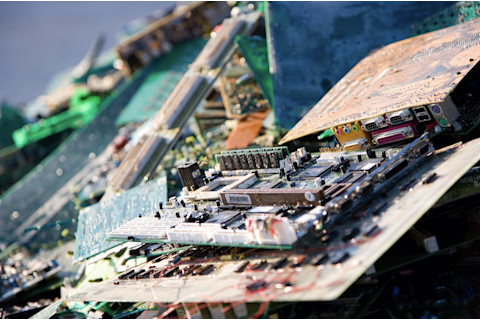
(Credit: Umicore)
Umicore
Urban mining sounds impressive, but it’s really just a glorified term for recycling. It’s an idea that has been around for millennia, says industrial ecologist Peter Afiuny, who is executive vice president of Urban Mining Co. in Austin, Texas. Battered and broken Iron Age weapons were melted down and reforged in later ages, medieval Britain built churches with stone from Roman ruins, and metals like tin and aluminum are recycled in high amounts today. It’s common sense to harvest the rare components in today’s discarded consumer products, from cellphones to tractors, for the products of tomorrow. And, as a bonus, these “ores” are already in the urban areas where they are most needed, instead of buried in mines in hard-to-reach locations.
The problem, however, is that these elements are really spread out. “The [original] mine is disseminated over thousands and tens of thousands of households,” says industrial engineer Christian Hagelüken of materials company Umicore, based in Brussels. Mining all those appliances and electronics first requires gathering them all into one area.
A second challenge is dismantling today’s incredibly complex products. Elements now suffuse technology like spices in an elaborate dish — iPhones, for instance, contain a dash of indium, a sprinkling of terbium and hints of some 70 other elements. Most consumer products were never designed to be easily disassembled and recycled, so reducing that big pile of merchandise into its ingredients is tricky.
To that end, companies have pioneered various methods to better reclaim the valuable parts of our old tech. Urban Mining Co. focuses on extracting neodymium-iron-boron magnets from hard drives, wind turbines and more, turning them into powder and making new magnets directly from that. And Umicore’s furnaces can melt and separate any of 17 elements from old catalytic converters and circuit boards.
But while this strategy brings a recycling approach to mining, it does pose an inherent conflict with sustainability: Mining obsolete products for materials only works if the original products have a short lifetime to begin with. If our tech tools live as long as we do — a goal in any environmentally sound future — this mine will become increasingly scarce.
Gaseous Wastes
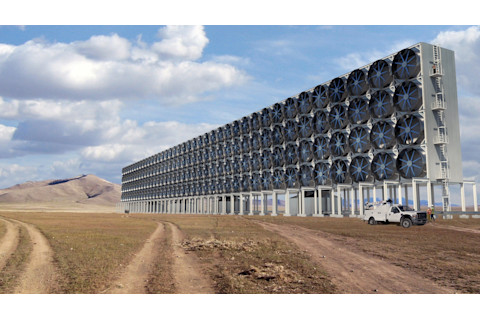
Carbon Engineering has opened a pilot plant in British Columbia that captures about a ton of carbon dioxide each day. It aims to build a plant shown in an artist’s rendering, to absorb 2.2 billion pounds of CO2 annually. (Credit: Carbon Engineering, Ltd.)
Carbon Engineering, Ltd.
It may sound futuristic (or ridiculous) to extract resources from the air, but we’ve effectively been doing it since 1913. The Haber-Bosch process converts atmospheric nitrogen into ammonia, which is used for fertilizers and explosives. Today, scientists want to reclaim a different element that humanity has been moving into the atmosphere for over a century, one with far higher stakes: carbon.
Humans have been releasing the carbon buried in fossil fuels in the form of carbon dioxide, with disastrous effects. Anthropogenic climate change is linked to melting ice sheets and rising seas that are predicted to flood coastal cities and island nations. Stronger storms and droughts have become the norm. The U.N.’s 2018 Intergovernmental Panel on Climate Change report concluded that developing carbon-capture technologies is now a necessity if we’re to stave off the worst effects of climate change.
But it’s not easy. One of the biggest problems is that, even though carbon dioxide levels are high, the gas still makes up just 0.04 percent of the atmosphere. To draw this tiny amount of carbon from the air effectively, the startup company Carbon Engineering in Squamish, British Columbia, built a device that forces air into contact with an alkaline solution that absorbs carbon dioxide. Inside the device, the alkaline solution flows downward, guided by ridged plastic surfaces, like corrugated cardboard, nestled upright. The solution coats those surfaces, creating a vast area of contact with air as it streams through the device horizontally, helping it grab those minute amounts of carbon in the air.
Currently, Carbon Engineering’s pilot plant captures about a ton of carbon dioxide per day, and the company is planning a full-scale plant that would absorb a million metric tons (or just over 2.2 billion pounds) of CO2 annually.
But unlike the carbon in fossil fuels, which comes packed with energy thanks to the hydrogen atoms it carries, carbon dioxide is fairly inert. So for mined carbon to be repurposed back into fuel, energy needs to be injected (in the form of new hydrogen atoms) back into the carbon. Iceland-based Carbon Recycling International and others have made huge strides in this area, turning CO2 emissions from power plants into fuels like liquid methanol.
Carbon Engineering’s strategy is to cobble together established chemical processes to first reduce carbon dioxide to carbon monoxide, and then convert that into a light synthetic crude oil.
Eventually, we might be able to pull our fuels literally out of thin air.
Fast Facts
The Arctic Circle is defined as the region where the sun can shine continuously for 24 hours. But because Earth’s axial tilt is changing, the Arctic Circle is moving north nearly 50 feet each year. For convenience, most geologists recognize the region north of 60 degrees latitude as the Arctic.
Mining has been banned near the South Pole since 1998 as part of the Protocol on Environmental Protection to the Antarctic Treaty, ratified by 28 countries. The treaty will be revisited in 2048.
Even though it is dilute, seawater contains significant metal resources. Starting in the 1970s, Japanese scientists tried to mine uranium from seawater by developing highly absorbent sponges, but they weren’t effective enough to take to market.
Many metals are called hitchhikers because they are byproducts of other metals’ production. Some examples include cobalt, indium, tellurium and dysprosium; the only way to mine them is to purify them during the refinement of other elements.
Some 50 million metric tons of electronic waste are produced globally every year, according to a U.N. report from January 2019. Hidden within are resources worth an estimated $62.5 billion.
One of the most well-known examples of extracting resources from the air, the Haber-Bosch process for converting nitrogen to ammonia, created synthetic fertilizers and successful crops, thereby fueling a global population to over 7.5 billion today. However, on the flip side, it is responsible for 1.4 percent of global carbon emissions.


